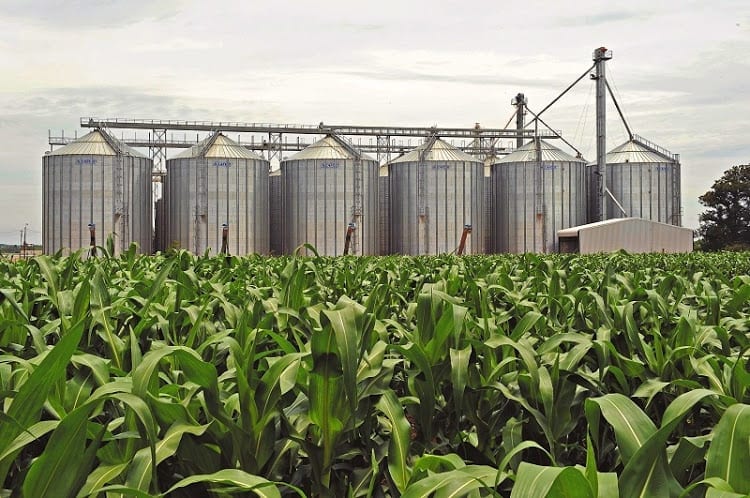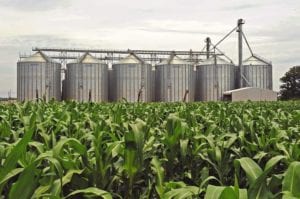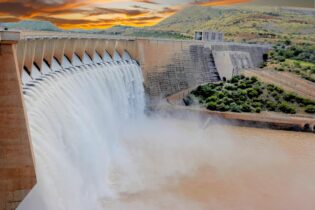
File picture: Maize farming
This was announced by the Gamtoos Irrigation Board (GIB) at the end of last week.
The decision to allocate farmers only 40% of their annual water allocation was taken by the Department of Water Affairs and comes as the dam reaches 18.6% capacity – a level last witnessed in 1991.
According to GIB officials, only 2mm of rain fell into the Kouga Dam’s catchment area between April and June this year.
GIB chairman Tertius Meyer said the board met with the water department on 29 June to discuss the allocation cuts. “On the one side there is slight relief, as we expected a bigger cut than 60%. There is, however, also concern, as there is only 18% of water left in the dam,” he said.
“The hope is that, according to the allocation cuts and long-range weather forecasts, that the dam will hold more water this time next year.”
Meyer said the water allocation was usually communicated by the department a month in advance.
“We have farmers who have big commercial contracts with supermarkets who need to plan well in advance, so this was very short notice for them,” he said. “Now the question is do they split their 40% allocation over 12 months, or do they use it up in July and August and hope for good rains during the traditionally high rainfall months of September/October.”
Drought-stricken farmers
For the affected farmers, the cut in water allocations is dire. GIB board member Rudolf Rose grew up in the region and farms maize, lucerne and vegetables.
“On a full water allocation, we are able to plant 350 hectares of combined crops annually,” Rose said. “With the reduced allocation, we will be lucky if we even plant 160ha. If that’s the case, we will have to concentrate on our higher income crops that are less water intensive, such as pumpkin and butternut.
“The lucerne will survive, but we’ll get no yield from that crop,” he added. “The maize is too water intensive to plant. Even with a full allocation of water in 2016/17, we battled because of the very low rainfall. Now the dam is low, and that is our last line of defence.”
Unemployment could rise
Rose said that jobs also hang in the balance.
“If farmers can’t plant their full allocation of crops, there is no need for a full quota of staff,” he explained. “We operate with a fairly small contingent of staff, and I have not had to cut back yet.”
Rose’s neighbour and fellow GIB board member Jacques du Preez focuses on sweet potato, carrots, maize and wheat, and employs up to 40 staff.
“I’ve been farming for 20 years,” du Preez said. “We took the decision in April not to plant maize for 2017/18, and to cut back slightly on the rest of the crop production.
“We will then use our water allocation for 2017/18 to get that crop to harvest in August/September,” he explained. “If by then there have been no further rains, there is no Plan B. We’ll have to cross that bridge when we come to it, but I am staying positive.”
Water savings critical
The board said the current drought crisis has escalated the importance of saving water in the region.
On 16 June, the maintenance and repair shutdown of the main canal leading water from the Kouga Dam to the Loerie Dam began. This was scheduled to last 16 days.
The annual shutdown of the 69km canal, and, at staggered intervals, another 45km of branch canals, has become key to the irrigation board keeping its water losses low. Over the past year, the board has reported water losses of just 7.5%, mainly from leaks and evaporation – down from 13% in 2008 when it received a national accolade for water savings.
GIB’s losses are also dramatically lower than cities such as the Nelson Mandela Bay metro, which reports annual losses of between 30 and 40%.
“We have a robust water management system,” said GIB CEO Pierre Joubert. “When a leak is reported, we aim to address it within the hour.”
Joubert said GIB wanted to reduce losses even further through the refurbishment and replacement of ailing infrastructure.
“Our infrastructure was laid in 1970, so it requires ongoing maintenance,” he said, adding that the irrigation board spent R23 million annually on maintenance and operations.
GIB financial manager Rienette Colesky said the consistent maintenance of the irrigation board’s infrastructure was key to reducing water losses.
“We have quite an advanced water management and metering system, which also helps keep water losses low,” Colesky said. “For us, being pro-active in maintaining our infrastructure has been a key driver in our success.”









